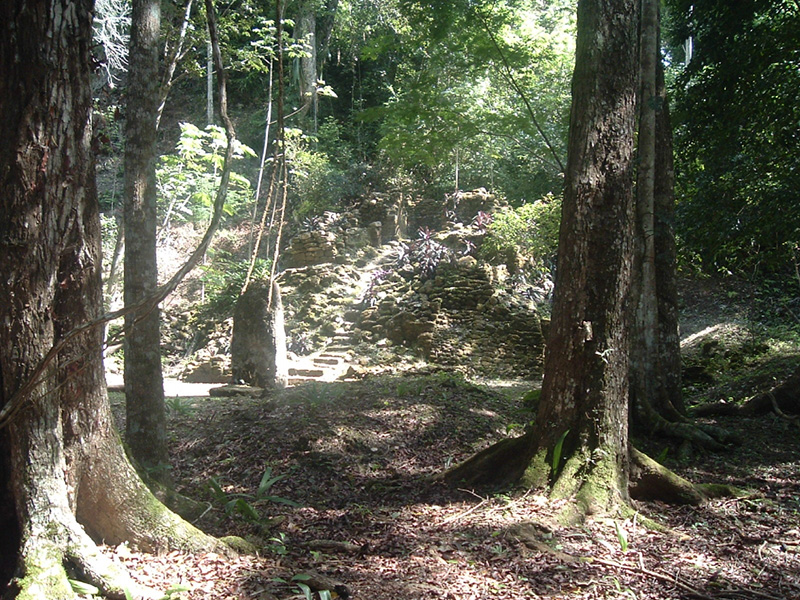CULTURAL HERITAGE
The area has an extraordinarily rich archaeological heritage. The Classic Mayan ceremonial centre of La Milpa is one of the largest in Belize and the main plaza is one the largest in the Maya world. Elsewhere there are numerous remains of dwellings ranging from simple house-mounds to elite dwellings including at least one, Dos Hombres, that rivals La Milpa in size. Over 60 substantial sites have been listed and others are located regularly. Although most of the visible remains date from the Late Classic Maya period, other finds range from pre-ceramic cultures through to the European contact, when New River Lagoon lay on the main access route to the upper Belize River Valley and the eastern Peten.
The forests on and around the Rio Bravo have also played a major role in the more recent history of the country. Mahogany logging probably dates back to the 18th century, from camps established on New River lagoon and Irish Creek. At this time the area further west was under the control of the resident Maya population although the expansion of logging – with camps established at Blue Creek, Hill Bank, Canal Bank, and Quam Hill (near Cedar Crossing) by the mid-19th century – brought them into increasing contact with the mahogany cutters. This period is marked by a series of conflicts that culminated, as part of the larger events of the Caste War, in fighting at the Quam Hill mahogany camp in 1866, at San Pedro (Yalbac) later the same year, and in the destruction of Indian Church in 1867. The Maya of the area were later resettled near Orange Walk and the only remaining settlements were those retained for logging operations.
The two main logging companies operating in the region (Young, Toledo & Co. and James Hyde & Co.) merged between 1875 and 1880 to form the Belize Estate and Produce Company – a commercial enterprise that had an enormous influence on the development of the country. The Rio Bravo, along with the neighbouring Gallon Jug and Yalbac holdings, formed part of its main mahogany forest and the site of an industrial forest operation using the most efficient technology and techniques of the day. As a result, output dominated the economy of the country for the first half of the 20th century and continued to 1984 when the logging finally became moribund.
This history has resulted, in addition to a rich physical and oral heritage, in great diversity in the living culture of the surrounding settlements. Long connections with the forest industry have had a particularly profound influence on the Belize River Valley villages, varied by distinctive lifestyles in the Mestizo and Mennonite settlements to the north and east of the Rio Bravo.


